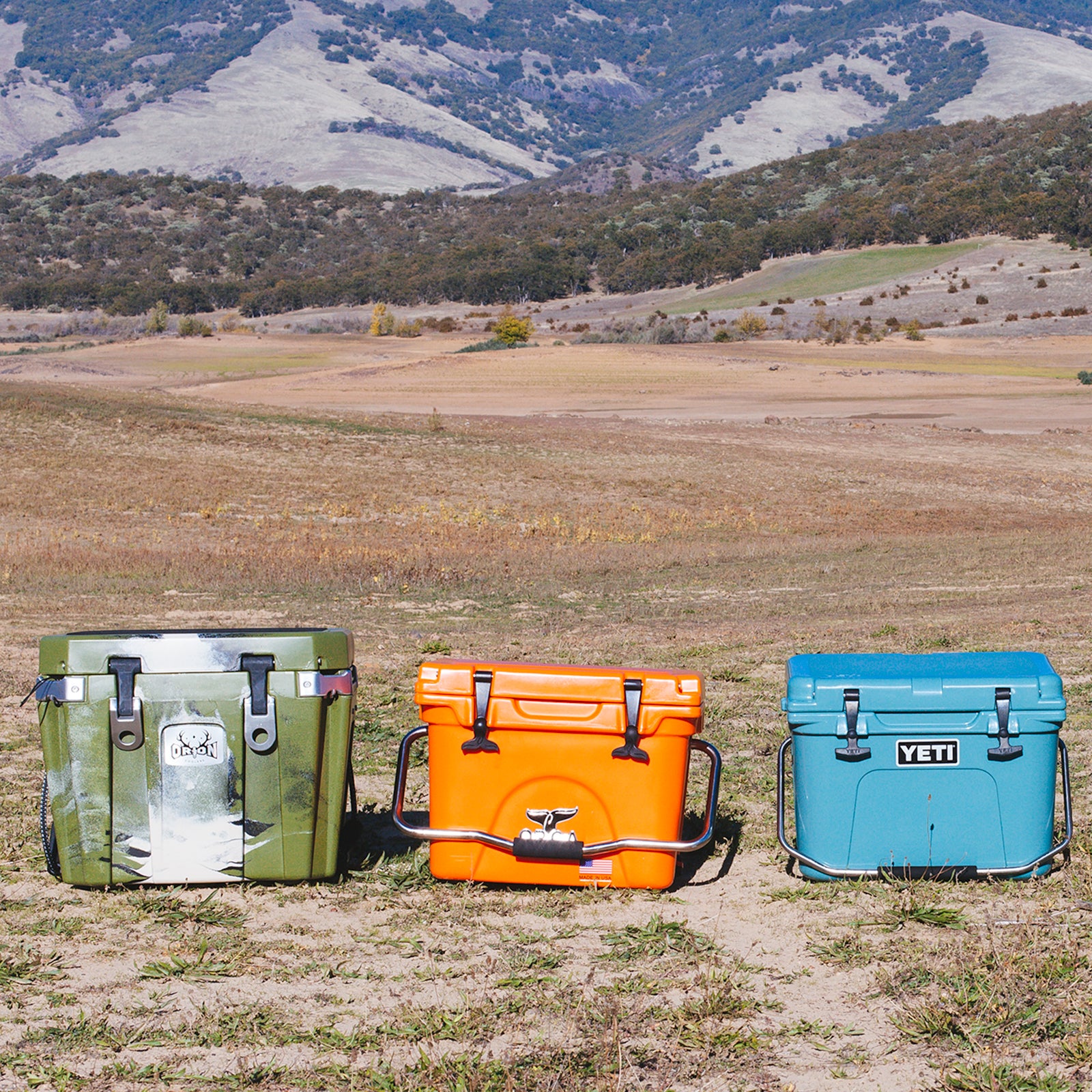A bomber 110-quart cooler is an undeniably badass piece of gear. It is also overkill for those of us who arenÔÇÖt regularly sportfishing in the Seychelles or boating the Grand Canyon (read: most of us). While IÔÇÖve found the 45-to-55-quart range to be a solid size for family weekends or longer trips on my own, the twentyish-quart ice box hits a sweet spot for day-tripping with the fam or heading out for a solo weekend. On top of thermoregulating more efficiently than their larger relatives, small coolers are much easier to carry and stuff into a packed trunk. Just because theyÔÇÖre compact does not mean theyÔÇÖre wimpy. On the contrary, I think a wee cooler should hold its own in an overfilled raft with the best of them. I put five of the best to a rigorous test to help you decide which one is right for you.
The Test
- Ice Retention: I individually weighed seven-pound╠řbags of ice in gramsÔÇöa figure which converts to 3,175 grams, though some bags weighed╠řslightly more or less. I conducted my test using╠řgrams to╠řyield╠řmore specific results, which made it╠řeasier to compare ice loss.╠řThen I put each bag of ice in a cooler, closed it, and left all of them╠řon the sunniest spot on my back deck for five days. Temperatures╠řwere in the low seventies during the day and around freezing at night. After 120 hours (five days), I strained the leftover ice (if any remained)╠řand weighed it. Then I repeated that process with a 40-hour sit time and similar temperatures to find out how the coolers would work on a weekend camping trip.
- Usability: I packed and unpacked each cooler five times with fridge contents (a six-pack of beer, a small bin of salad greens, and two smaller Tupperwares filled with leftovers) that I would bring with me if I scavenged for a weekend camping trip. I also noted any accessories built into the coolers. Some of them had upgrade options (most notably the Otterbox), but I focused on the base coolers themselves to keep the comparison as fair as possible.
- Ease of Carry: I placed a 14-kilogram (about 31 pounds) kettlebell in the center of each cooler and carried each╠řtwice around a╠řone-eighth-mile╠řobstacle course I set up in my backyard.
The Results
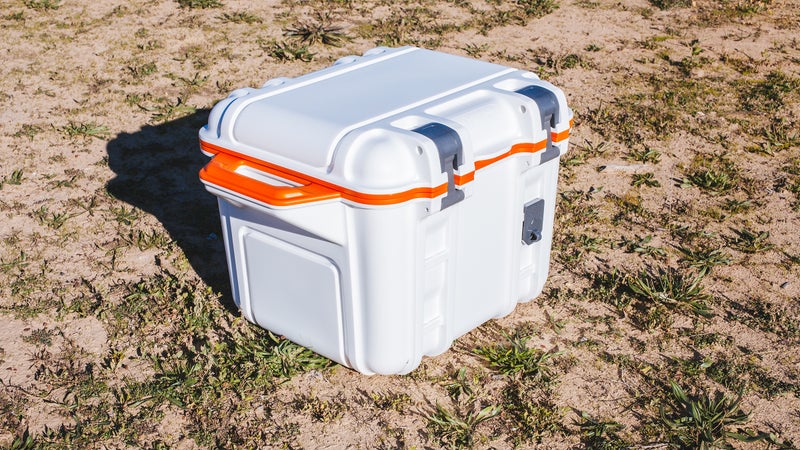
Winner: Otterbox Venture 25 ($196)
Ice Retention: 5 (Five-day ice loss: 2,705 grams, or╠ř89 percent; 40-hour ice loss: 658 grams, or╠ř20 percent)
Usability: 5
Ease of Carry: 4
This is a straightforward little cooler that did its job remarkably well. I was expecting the thermoregulation tests to end with pretty similar results to the other models, but absolutely kicked ass, still╠řholding 343 grams (three-quarters of a pound) of ice at the end of the five days. Credit the two inches of refrigerator-grade insulation. It╠řboasts╠řthe roomiest interior of any of these ice chests, making it╠řthe easiest to pack and giving╠řme the option of throwing more food in there. The large, no-nonsense molded handles arenÔÇÖt much to look at╠řbut made the Venture extremely easy to carry fully loaded. Since the handles are integrated into the coolerÔÇÖs burly body, I imagine they will last forever. (Handles are the first thing to go on a brutalized cooler.)╠řThe closures are╠řa smart mix of hard, durable plastic and thick rubber that made me feel confident the lid was closed. While its base model isnÔÇÖt as feature-rich as some of its competitors below, the Venture 25 killed it on the basics, which is all that matters at the end of the day when you need a cold beer.
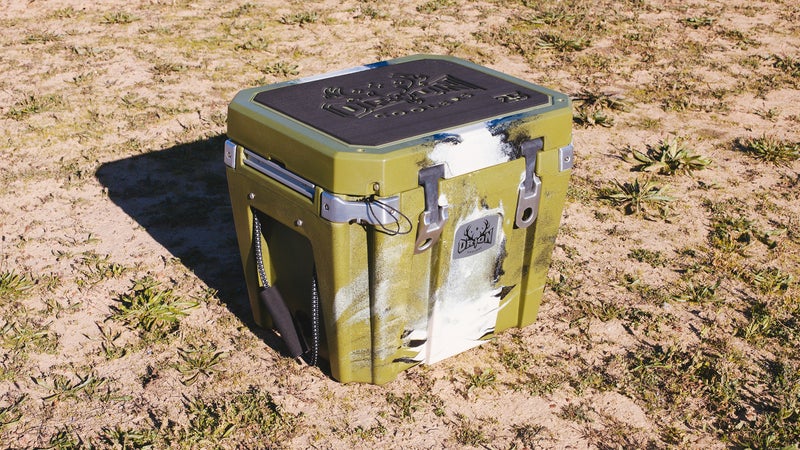
2. Orion 25 ($369)
Ice Retention: 4 (Five-day ice loss: 3,018 grams, or 93 percent; 40-hour ice loss: 717 grams, or 21 percent)
Usability: 4.5
Ease of Carry: 4.5
╠řwas certainly the most badass-looking cooler of╠řthis test, and it features╠řthe burliest additions. I would feel absolutely comfortable bringing this on a raft trip where I had a high chance of flipping, thanks to a metal tie-down on each corner (which can also be used to open beers), hearty metal and rubber closures, and sturdy handles. It was right behind the Otterbox in ice retentionÔÇöthe only other in the test that held ice for five full daysÔÇöand is also extremely easy to pack, unpack, and close. It shone in the carry test; its mountain-bike-reminiscent handles, which are threaded with thick rope,╠řallowed me to distribute the weight most comfortably while walking on flat ground. But it also has╠řbuilt-in handholds on the sides of the cooler, a perk if you╠řneed╠řto keep the whole thing closer to you╠řfor more off-kilter carrying. The Orion 25 has a foam grip pad on top that was made to stand on and cast from in a fishing boat, but we found it was a top-notch landing spot for a beer. ItÔÇÖs an excellent cooler and came very close to winning first, but it didnÔÇÖt thermoregulate as well as the Otterbox╠řand is significantly more expensive.
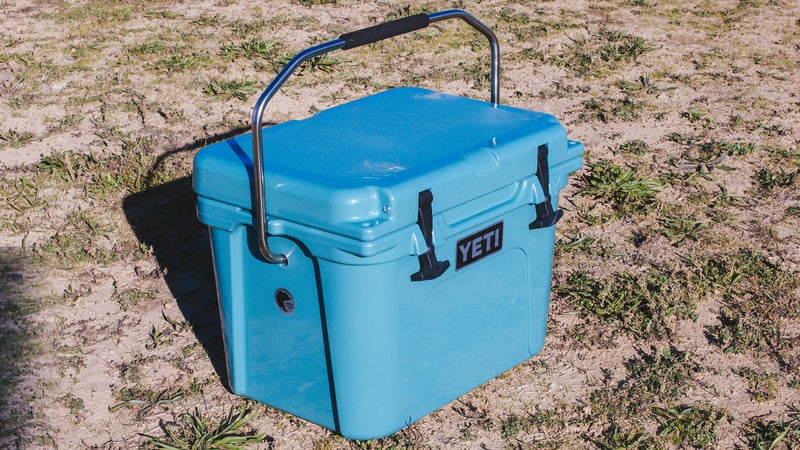
3. Yeti Roadie 20 ($280)
Ice Retention: 3.5 (Five-day ice loss: 3,195 grams, or 100 percent; 40-hour ice loss: 863 grams, or 26 percent)
Usability: 3.5
Ease of Carry: 3.25
and the Orca (below) were neck and neck for a lot of this test, but in the end, the Yeti was simply a better cooler. The two coolers received the same score for usability because their interior dimensions and closure systems are so similar. However, the Roadie performed slightly better in the 40-hour ice test and is definitely easier to carry╠řbecause of its extremely smart and intuitive system, which╠řlocks the handle above the middle of the cooler. The latter made it feel more balanced in hand than the Orca and easier to manage while walking over knee-high rocks.
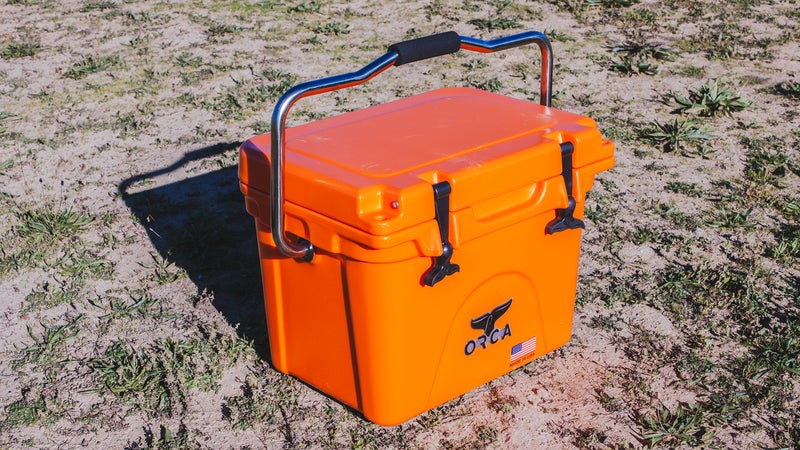
4. Orca 20 Quart ($218)
Ice Retention: 3.25 (Five-day ice loss: 3,214 grams, or 100 percent; 40-hour ice loss: 871 grams, or 26 percent)
Usability: 3.5
Ease of Carry: 3
While was edged out in the thermoregulation category and didnÔÇÖt carry quite as well as the Yeti, it is still a damn fine cooler and the second most affordable of╠řthis test. If youÔÇÖre like me, and you look at your cooler as a flair piece, the blaze-orange color was my favorite of the test, while the whale-tail rubber closures were both simple to use and pretty dang cute. The integrated mesh pocket on the front is also use extremely helpful for bringing essentials like silverware, a lighter, and a wine opener on an extended camping trip.
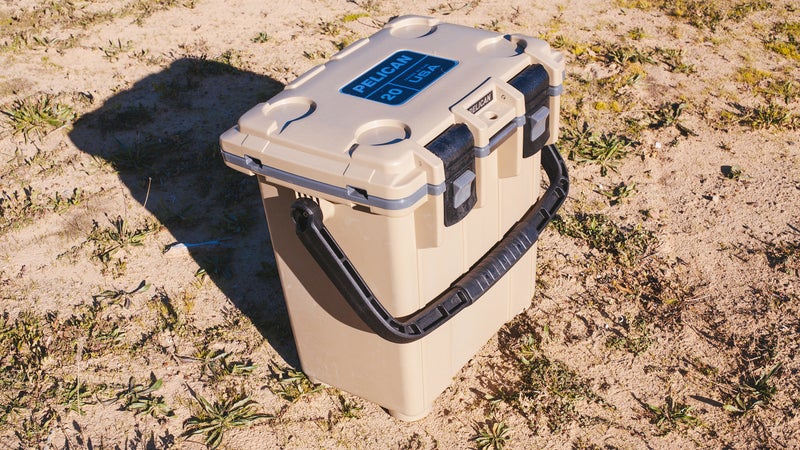
5. Pelican Elite 20 ($154)
Ice Retention: 2 (Five-day ice loss: 3,180 grams, or 100 percent;╠ř40-hour ice loss: 1,166 grams, or 36 percent)
Usability: 2
Ease of Carry: 3.5
While extra-tall stack height and skinny╠řfootprint made it easier to carry with one hand than both the Orca or╠řYetiÔÇöit cleared my knees with no problem while walking over an off-kilter rock pileÔÇöthat same profile made it a pain to pack and grab food out of. It was also outmatched by the other coolers in the thermoregulation test. This is still an excellent cooler for this price; it just got worse marks in a stacked field. ItÔÇÖs also worth noting that itÔÇÖs made in the U.S. and backed with a lifetime guarantee.


